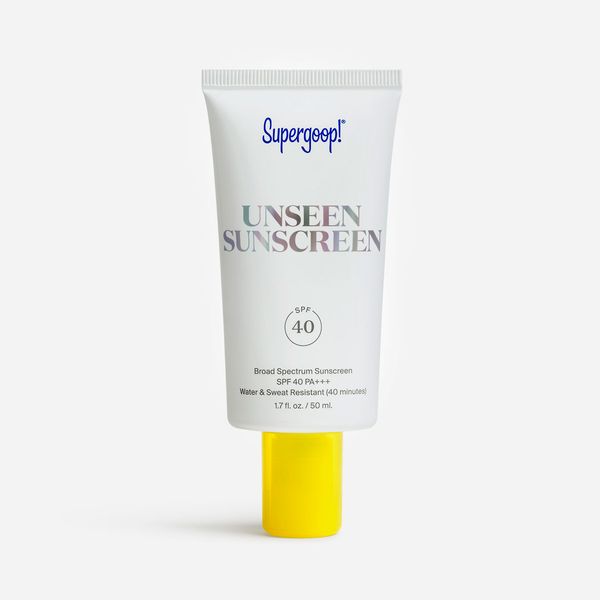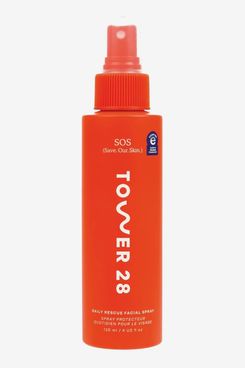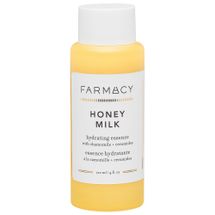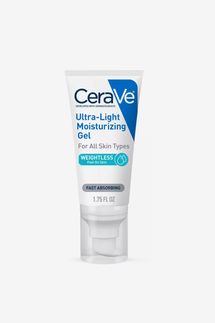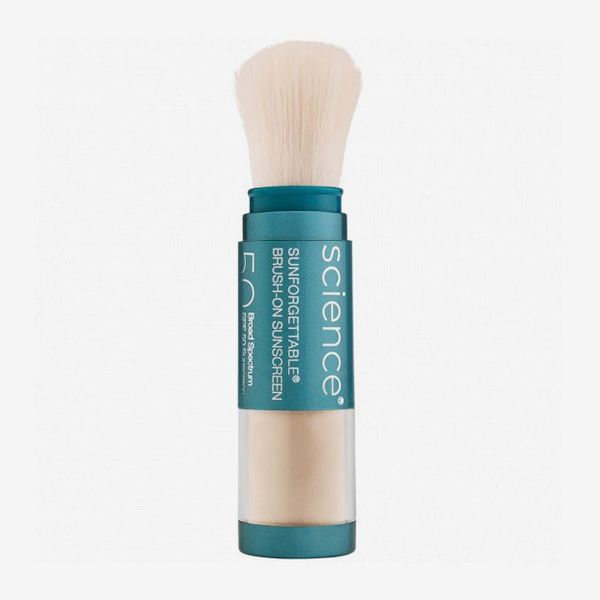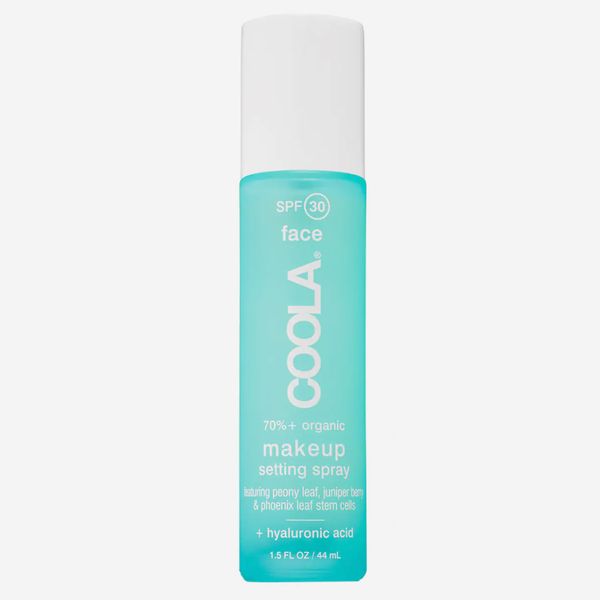
The “Tell Me Everything” series is a spinoff of “Ask a Beauty Editor,” designed to tackle the big, sometimes complicated beauty topics you’re most interested in. I’ll share the latest reporting in these explainers and update them when there’s new research or breakthroughs (or related questions) that warrant it. —Jennifer G. Sullivan
When did skin care get so … complicated? Dermatologists and aestheticians tell me they’ve been getting an increasing number of questions about how to layer skin-care products — and what particular ingredients do for your skin and when exactly to apply them — in the past few years. “It’s confusing! Some of these products are called serums, but they’re more of a lotion, or they’re labeled a toner but they exfoliate,” says Laura Scott, M.D., a board-certified dermatologist in Del Mar, California, and the founder of Korej Skin. And the last thing you want to do is buy a product only to find out later you applied it wrong and wasted your money.
So, does mixing certain ingredients with others render them both inactive? What does it mean if your skin care pills? And when exactly in your routine are you supposed to use that collagen jelly cream with niacinamide and freeze-dried hydrolyzed collagen? (An actual product, and currently one of Amazon’s best sellers.) To tackle all these questions and more, I asked experts for the general guidelines they use to explain product layering to their clients and patients and then grilled them about the “exceptions to the rule.” Read on to make sure you’re doing things right — and getting the most out of your skin care.
Here is how to apply skin care in the right order: Choose the lightest to heaviest rule and know their functions
The general rule we’ve all heard is to apply (and wash off) your cleanser first, then use products in order from lightest to heaviest, finishing with sunscreen. So: First use exfoliants (like peels or liquid exfoliants with alpha hydroxy acids), followed by watery liquids like toners or essences, followed by gels and serums, then lotions, and finally creams, balms, and oils.
“I recommend focusing on two aspects: texture and product function. Consider whether a product is a watery liquid, gel/serum, lotion, cream, balm, or oil, as this generally dictates application order,” says Sam Ellis, M.D., a board-certified dermatologist in Danville, California, and the founder of the skin-care line Prequel. So, line up all the skin care you use in your daily routine and place the products in order based on their function, as noted above, and then by their form within the functions.
Face oils can be confusing
When you consider face oil, the format is thick, so it would make sense to apply it after your hydrating face lotion or moisturizer — but it might have active ingredients like vitamin C or retinol and be marketed as an alternative to serum, meaning it should go on before moisturizer. Something like Byoma Sensitive Retinol Oil would go on before moisturizer, so the active (retinol) can be close to the skin. But something like Byoma Hydrating Recovery Oil would go on after moisturizer to seal everything in.
Sunscreen should always be the last step of your skin-care routine, no matter what
“Even if your moisturizer is heavier than your sunscreen — like the SuperGoop Unseen Sunscreen, which is a clear, really light sunscreen — the sunscreen is still the last step of your skin care,” Scott says. If you wear makeup, that can go on top of the sunscreen.
Allow 15 to 30 seconds between each skin-care step
“That’s for products to dry down before moving on to the next,” Ellis recommends.
Know what a skin-care product’s function is
If you’re not sure what a particular product does, then why are you using it? Yes, that’s a question to get you thinking about whether or not you really need it (IMO, a lot of people’s routines are overly complicated and could benefit from an edit), but it’s also a question to help you place it correctly in your routine. “If you can remember the why, like what it does for you or why you added it to your routine, that will help you figure out when to use it, regardless of vehicle or format, and regardless of the ingredients in it,” Scott says.
If you don’t know what the product is doing, ditch it
“This happens all the time with my patients who are real skin-care junkies. They text me like, ‘What do you think about this new product?’ My reply is usually: ‘What are you expecting it will do for you?’” Scott says. “Oftentimes, it will have the same function as something that’s already in their routine.” In that case, Scott says she recommends they substitute it in and remove the other product that serves the same function. “It’s not horrible to have two of the same types of products, but it can be wasteful and expensive, and if it’s something like an exfoliating acid or retinol, then you’re increasing the risk for irritation.”
There are only a few skin-care ingredients that cancel each other out
In general, these are the ingredients that are oxidizing agents (like the acne treatment benzoyl peroxide and the antibacterial ingredient hypochlorous acid, the key ingredient in Tower 28 SOS Spray) and the tough-to-stabilize antioxidants (like vitamin C). “You have an oxidizing agent and an antioxidant, so they’re basically in battle with each other,” Scott says. If you happen to have both of those contradictory ingredients in your routine, then just use the antioxidant in the morning and save the others for night.
Potentially irritating ingredients shouldn’t be used at the same time.
There are other actives that may be mildly irritating on their own, and when you combine them, that can turn into major irritation. The biggest concern is when you start putting together “exfoliating acids or retinoids with vitamin C,” says Ellis. If those ingredients are in the same product, you can assume the formulator used less irritating versions or encapsulated or buffered them in some way to avoid irritation. (For example, Paula’s Choice 1% Retinol Treatment has slow-release retinol, vitamin C, and skin soothers to prevent irritation.) But if they’re in separate products in your routine, Ellis recommends applying the exfoliating alpha-hydroxy acids (e.g., glycolic, lactic, mandelic) and beta-hydroxy acids (e.g., salicylic) in the morning and the retinoids at night, or on alternate nights. And if vitamin C is in the mix, use that in the morning and alternate the retinoids and acids at night.
If you have sensitive skin, try sandwiching active ingredients between hydrating ones
Remember how you’re supposed to use moisturizing products after active treatments, like vitamin C or retinoids? That’s so the active is closest to your skin, where it can be the most effective. However, if you’re someone whose skin is sensitive, you may experience irritation when you apply products at their full potency. That’s where sandwiching or buffering comes in. “Apply a layer of light hydration, and then put your active on top,” Scott says. “Neither of those will counteract each other, but they’ll just make it so that the active penetrates a little bit more slowly.” She says the technique works best with light hydrators (such as an essence, like Farmacy Honey Milk Hydrating Essence, or gel, like CeraVe Ultra-Light Moisturizing Gel) rather than thick, occlusive products like balms or creams.
Pilling is unpredictable, but watch for sunscreens
Pilling is when you apply a product (makeup, skin care, or sunscreen) and it starts to ball up or flake, which means the formula is responding to an existing product on your skin — or the remnants of another product. Some makeup artists and aestheticians say you can avoid this by making sure not to put oil-based products on top of water-based products, but I’ve asked dozens of cosmetic chemists about this issue and they say it’s almost impossible to predict when pilling will happen. And it may happen one day and not the next. But if it’s happening regularly, Ellis says the first thing to try is applying less of the products and allowing more time for them to dry between application layers. If it’s still happening, you need to experiment to find products that work better together.
Personally, I’ve noticed pilling is more of an issue when sunscreen or products with SPF (like foundation or tinted moisturizers) are in the mix. But don’t use that as an excuse to skip the sunscreen! If you use an antioxidant or vitamin serum and you’re not wearing sunscreen, you’re basically negating any positive effects you’d get from the serum. Talk about wasting money! “Sunscreen is a protective shield that makes everything else work better,” Scott says. I find sunscreens that come in a spray (like Coola SPF 30 Makeup Setting Sunscreen Spray) or powder (like Colorescience Brush-On Shield SPF 50) are pretty much guaranteed not to pill.
Look at the ingredients to make sure you are not overexfoliating
Things get tricky with exfoliators. Many products that aren’t specifically used or marketed as exfoliators happen to have exfoliating properties, and you could end up irritating your skin or compromising your skin barrier if you use them every single day. Let’s say you use a cleanser that happens to have glycolic acid (it’s pretty common these days), a brightening toner (with salicylic acid), a dark-spot serum (it might have mandelic acid), and a retinoid for fine lines (retinoids can have an exfoliating effect). That is a lot of exfoliation. You may be able to handle it, but some people can’t. And if you have dryness or redness, it might be a sign you’re overdoing things.
“Ultimately, I encourage people to listen to their skin and trust their intuition,” Ellis says. As scientific as some of these products sound, you don’t need to approach your skin-care routine as if it’s chemistry class. “Skin care shouldn’t be a source of anxiety. While there are best practices, don’t worry too much about making a mistake, because your skin will still reap the benefits of the products you’re using.”
Send your questions to [email protected]. (By emailing, you agree to the terms here.)



